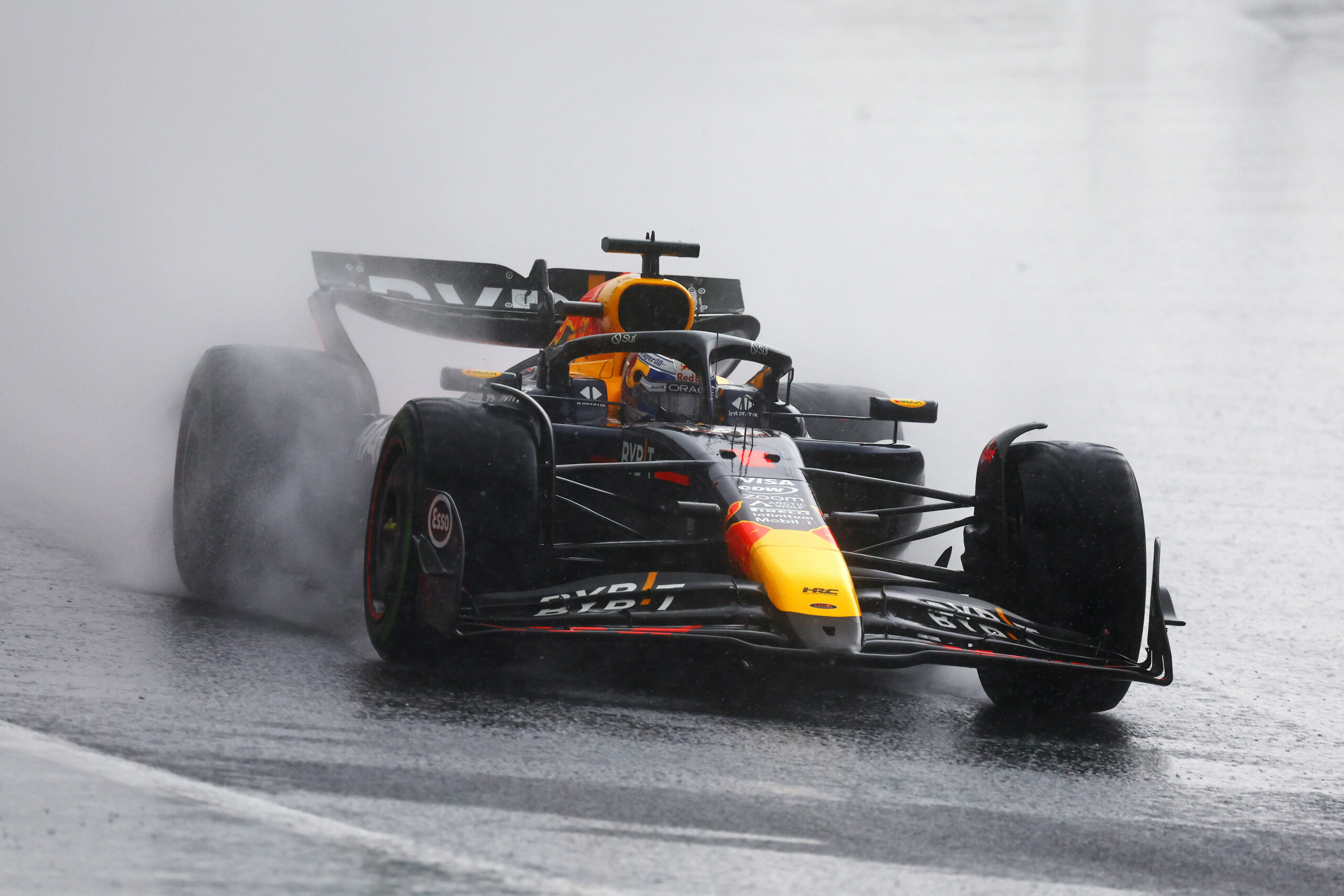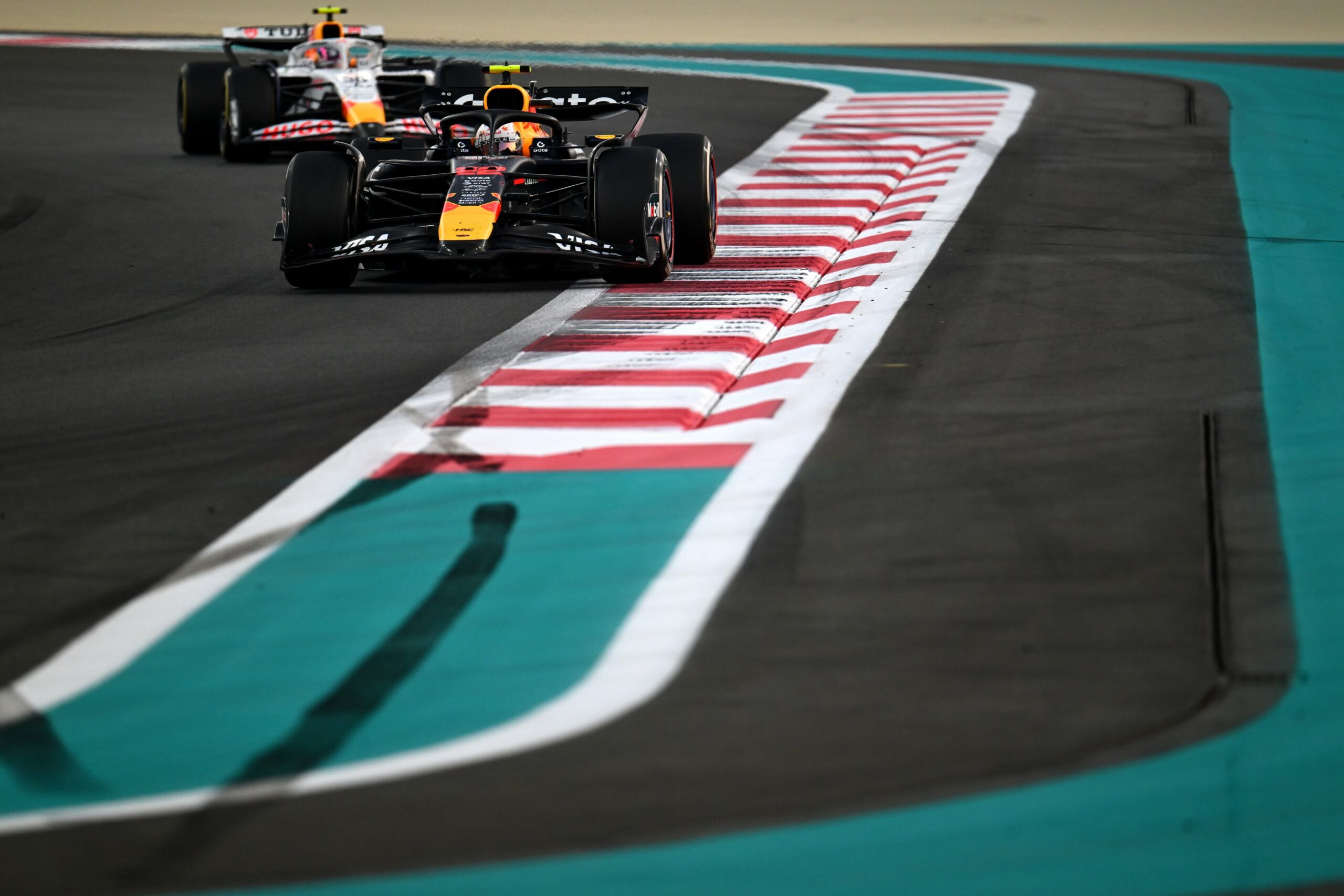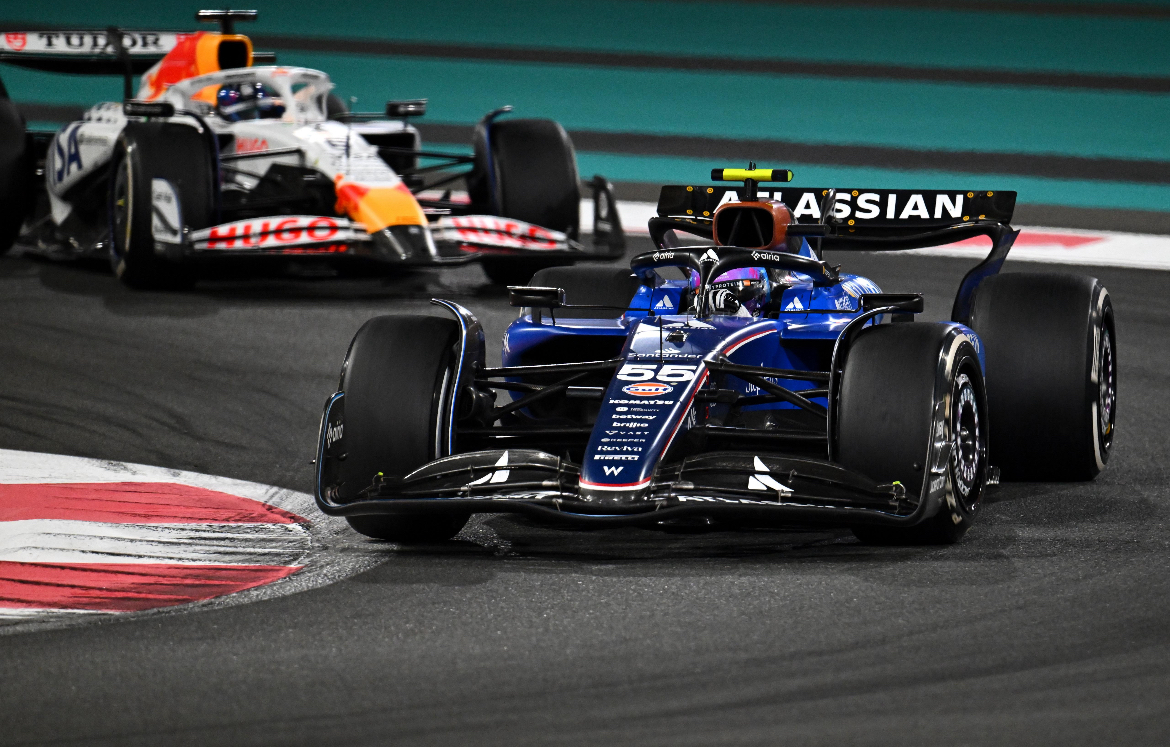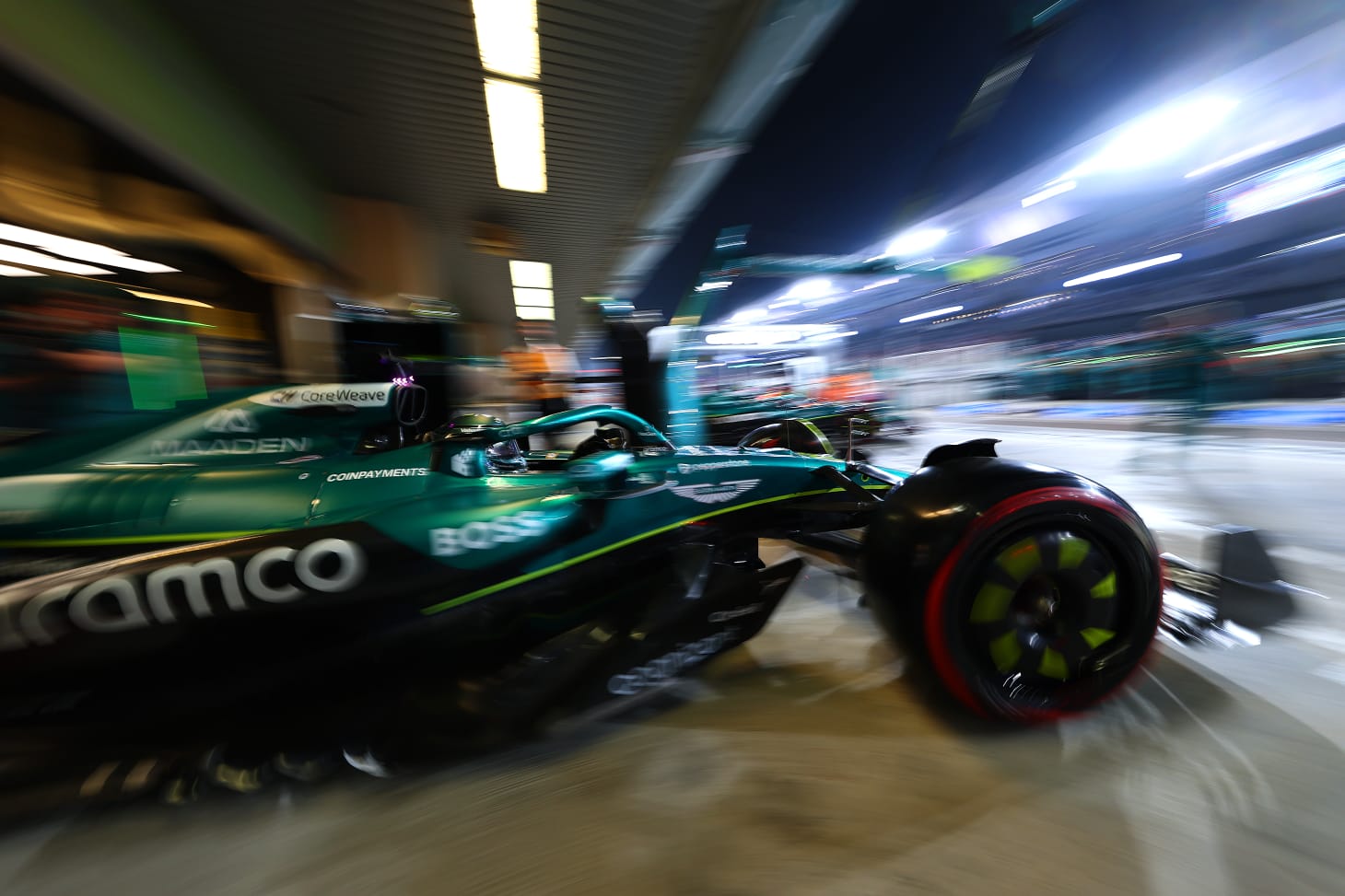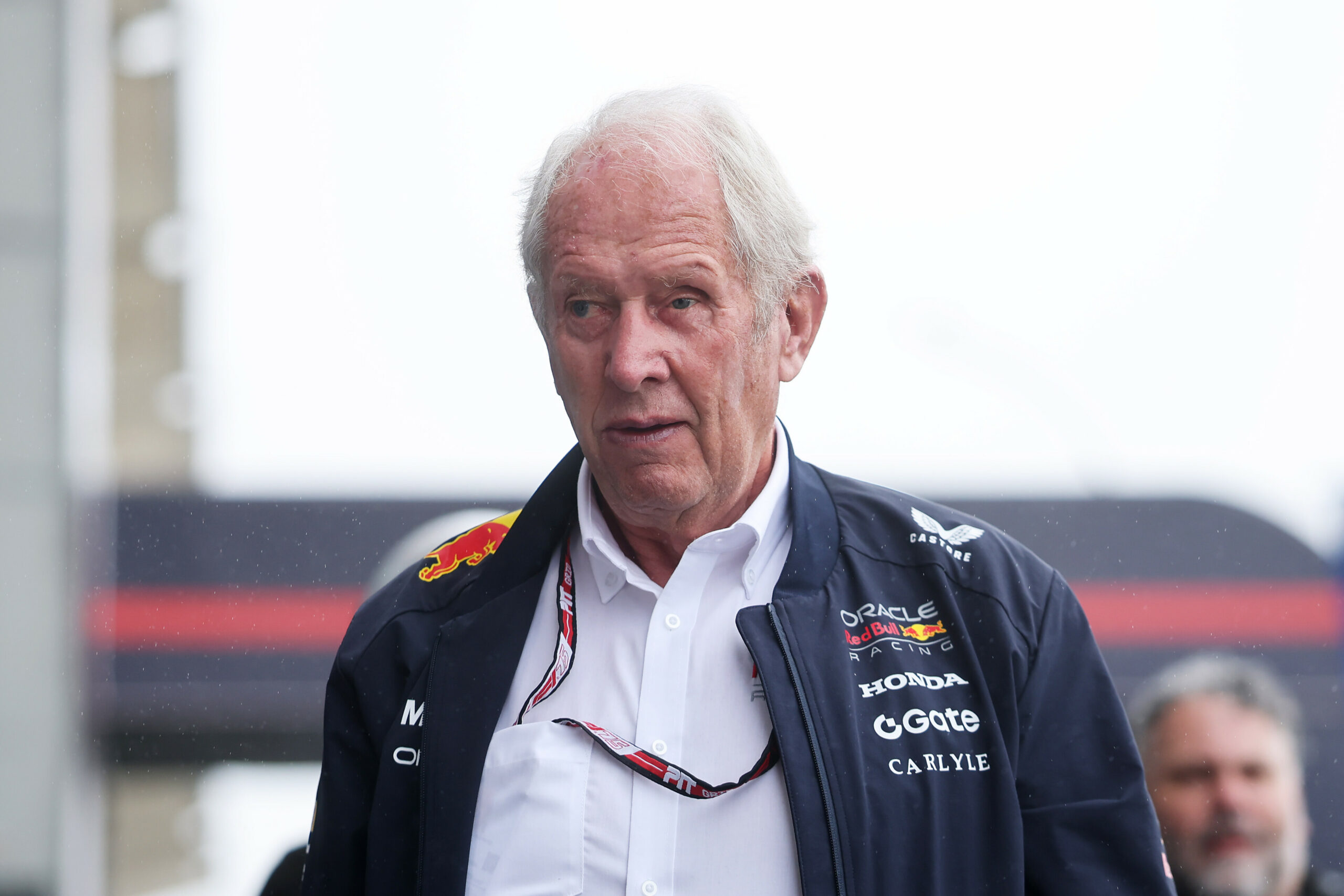The shock announcement of Niels Wittich leaving his role as F1 race director — that seems to have been a firing — comes following a weekend at the Brazil GP where questions around safety came to the fore once again. Rui Marques is replacing Wittich as race director for the rest of the 2024 F1 season.
Eduardo Freitas’ time as a rotational race director came to an end in late 2022 following his handling of events in the pouring rain at Suzuka that day.
Sprint Race
In the fight for P10 in the Sprint, smoke appeared from the rear of Nico Hülkenberg’s Haas in the closing stages. He eventually had to pull over out of turn 10 and yellow flags appeared.
The German was told that they “need to stop the car” by race engineer Gary Gannon. No further communication about trying to make it back to the pits was made.
As he parked it just off the track, a quick deployment of the VSC seemed inevitable.
However, it took just over 2 minutes for the VSC to be deployed after the yellow flags initially came out, allowing McLaren to swap the cars and give Lando Norris the lead before it appeared.
While there’s no question that McLaren could have swapped the cars eventually as the VSC was ended before the Sprint finished, it raised some serious questions about how it was managed by race control.
Grand Prix qualifying
Franco Colapinto — 7 seconds for a red flag
In wet conditions on Sunday morning at Interlagos, crashes were going to be inevitable.
The first one came just over halfway through Q1 as Williams driver Franco Colapinto crashed at turn 3. He lost the rear as he got on power and hit the tyres on the outside.
After the yellow flags appeared on the world feed with 8:57 remaining, a red flag was thrown 7 seconds later.
The only driver who completed a lap was Charles Leclerc (2 seconds after the yellow flag appeared).
Carlos Sainz — 27 seconds for a red flag
The second red flag came in Q2 as Carlos Sainz binned it at turn 2. As the Spaniard gently tried to apply power, the rear got loose and he damaged his gearbox as he went rear first into the barriers.
Although it was clear immediately Sainz’s car was too broken to continue, Wittich allowed Liam Lawson (5 seconds after the yellow flags appeared), George Russell (12 seconds), Lance Stroll (16 seconds) and Valtteri Bottas (23 seconds) to complete their laps with double waved yellow flags appearing at 6:18 remaining. The session was halted with 5:51 left.
Lance Stroll — 51 seconds for a red flag
In a very similar accident to Franco Colapinto, Aston Martin’s Lance Stroll lost the car and crashed into the barriers at turn 3. His left rear suspension and rear wing was completely broken.
Charles Leclerc (1 second after the yellow flags came out), Lando Norris (11 seconds), Alex Albon (28 seconds), and Liam Lawson (34 seconds) all got a time in before the red flags eventually appeared.
Fernando Alonso — 5 seconds for a red flag
The two-time F1 World Champion crashed at turn 11 as he lost the rear tackling the downhill left hander, ending up in the barriers.
Alex Albon — 8 seconds for a red flag
As the end of Q3 approached, Alex Albon lost his FW46 under braking into turn 1 and had a big crash, forcing him to miss the race due to the damage.
Inconsistent timing of qualifying red flags
For the accidents of Colapinto, Alonso and Albon, red flags came out quickly. However, it was a very different story for the Sainz and Stroll ones.
Charles Leclerc crossed the line fractionally after the yellows appeared for Colapinto and Stroll’s crashes — it was fine on both occasions because of how close it was.
However, the inconsistency was obvious. George Russell was about to cross the line in Q1 when the red flag was thrown for Colapinto’s crash — if it had been during the Sainz and Stroll crashes, he gets the time in.
When Stroll crashed and the yellow flags appeared, the order was Alonso, Piastri, Leclerc (a second after they appeared), Ocon, Russell, Stroll, Norris, Tsunoda, Bottas and Albon. Verstappen was down in P11.
Any theories on this being done to help Lando Norris and the title battle can be forgotten about.
However, to leave a car stranded in a dangerous area for 50 seconds when other cars could easily crash even when lifting for yellow flags is completely unacceptable. Verstappen, Gasly and Pérez were behind the Canadian.
Turn 3 has been a hotspot for crashes in the brain, as anyone who watched the 2003 Brazilian Grand Prix will know.
The big beneficiary of those allowed to complete their laps was Liam Lawson as he moved up from P12 to P4.
In Q3 when Alex Albon crashed at turn 1, Lando Norris and George Russell were ahead of him and on laps when the red flag was thrown — a very different story to how the end of Q2 was managed.
Red flag conditions in the Grand Prix
The Grand Prix turned on its head as a red flag was thrown on lap 32 as Franco Colapinto had a big accident coming up the hill at the end of the lap.
The big talking point for many was: Should the red flag have come out earlier?
Below contains a list of team radio messages from the critical laps between 27-33, where aquaplaining and calls for a red flag featured heavily.
The Safety Car was finally deployed on lap 30, three laps after the conditions got really bad.
Multiple drivers predicted a big crash — and it came at turn 14 as Franco Colapinto tried to catch the Safety Car.
Lap 27
Russell [P1]: “Starting to aquaplane.”
GR: “Struggling to keep this thing on the road here. It’s really bad.”
Lap 28
GR: “I think this is almost red flag conditions now. So much rain.”
GR: “It’s absolutely chucking it down now. Aquaplaining on the straights.”
GR: “I think this is going to go red. This should go red. We can’t keep the car on the road like this, there’s going to be big crashes. Some big puddles through 4 and 13. There will be a crash there.”
GR: “I am struggling to keep it on the road under VSC conditions.”
Norris [P2]: “It’s getting very, very wet. I’m struggling to see a little bit.”
Ocon [P3]: “It’s a lot of water now. Probably too much to be fair.”
Peckett: “Too much for these tyres, question.”
EO: “No, no. Whatever tyres.”
JP: “Okay Esteban, can you repeat your last message please, nice and clearly.”
EO: “There is a lot of rain for whatever tyres. There is too much standing water.”
JP: “Okay, understood.”
EO: “They should red flag that.”
Tsunoda [P4]: “Yeah, too dangerous for inter.”
Gasly [P6]: “I’ve got bloody aquaplaining.”
Lawson [P7]: “Yeah, aquaplaining. This is really bad. I’m struggling to keep with the delta, to be honest.”
LL: “This is too wet.”
Leclerc [P8]: “They should red flag. There’s going to be a big shunt.”
Alonso [P10]: “Yeah, a lot of rain. We need a Safety car for some laps here, if not a red flag. Let’s see.”
Sainz [P13]: “We need a Safety Car now or a red flag.”
Lap 29
PG: [P3]: “Too much water. They’re going to red flag the thing. Way too much water. Aquaplaining everywhere.”
GR [P4]: “I can’t see s***. This needs to go red.”
LL [In pits]: “There’s going to be a crash, for sure.”
Piastri [P8]: “I am struggling to keep it on the track. I can’t see a thing.”
FA [P9]: “Yeah, Safety Car conditions please. Safety Car. We cannot go full throttle on the straight. Crazy.”
OP: “We need a red flag. It’s ridiculous out here now.”
Bottas [P10]: “This is a red flag. Aquaplaining everywhere — I can’t see shit.”
VB: “It just needs to be a red flag, that’s it.”
Bearman [P15]: “How are we allowed to race like this, someone is going to crash big time.”
OB: “I can’t even see where I’m going. Come on, talk to the FIA. This is really dangerous. I’m trying not to die.”
CS: “This is on the limit.”
Hülkenberg: “This is a red flag. We can’t see.”
Lap 30
Ocon [P1]: “Red flag, come on.”
Verstappen [P2]: “Mate, this is a red. It needs to be a red [flag], this.”
Lambiase: “Okay, Safety Car deployed, Max. Safety Car deployed.”
GP: “All drivers have said exactly the same thing [regarding conditions] Max, so I’ve got no idea what’s going on.”
MV: “Yeah, it’s too dangerous this.”
YT [P6]: “It’s too dangerous. Aquaplaining like crazy.”
OP: “I think even in the wet would struggle in this. I can’t even drive normally at this speed [SC conditions].”
Hamilton [P11]: “I can’t see — it’s aquaplaining like crazy out here.”
OB [When the Safety Car is deployed]: “Oh, thank god. That was so bad.”
Lap 31
MV: “The track is filling up with water like massive rivers. It is just undriveable.”
GP: “Well we didn’t qualify yesterday in conditions better than this, so I’m not sure what’s going on Max.”
PG [ran wide at turn 2]: [Inaudible] “f***ing wall at 50kph.”
PG: “It’s way too much. Way too much water.”
PG: “Red flag and wait a bit. Right now it’s a guaranteed shunt. Way too much standing water, especially in the last corner turn 14.”
John Howard: “Okay mate, so we’re in contact with race control. We’re on it.”
GR [P5 and went off at turn 2]: “I can’t even keep this on the track under VSC.”
CL: “And that is not driveable. If they restart the race, it’s going to be a huge mess.”
OP: “The front straight is like a swimming pool. I can’t even go past half throttle — and I have no idea where the track is going.”
OP [ran wide at turn 2]: “There’s standing water everywhere. The wets would not survive this.”
FA: “Turn 2 and 3 is a swimming pool.”
CS: “We cannot race right now — I cannot keep it on track under Safety Car. The Safety Car delta is faster than me.”
Lap 32
MV: “My tyres are just like a boat.”
PG: “Turn 3 I can’t see anything. I don’t even have control of the car right now above 70kph.”
GR: “I am floating on these straights. Literally every corner the tyres are not on the ground. I am like a boat.”
CS: “I cannot see nothing.”
Lap 33
MV [under red flag conditions]: “Even at 70[kph] in the pits I can’t see where I’m going.”
Moments not shown on the world feed
— Bearman almost crashing after aquaplaining at turn 13 on lap 27; he almost drifted into the wall on the right hand side heading down the main straight as the visibility was so poor on the next lap; he went off the track at turn 3 because of the spray
— Lawson going off at turn 5 on full wets on lap 29
— Bottas nearly spun off at turn 10; big lifting on the main straight due to the conditions; he went slightly onto the run off at turn 6 under Safety Car conditions
— Multiple drivers almost crashing because of aquaplaining at turn 15
— Sainz and Pérez almost colliding at turn 14; Pérez having to massively lift on the main straight twice because of the spray behind other cars
— Gasly almost going off at turn 3 on lap 30 because it was a lake
— Gasly, Russell, Piastri, Sainz going into the tarmac run-off at turn 2 on lap 31 under Safety Car conditions
Safety was not a priority in Brazil
Unless you support a certain driver or team, everyone wants to see a close championship fight every single year.
In Formula 1, however, safety should always be the most important thing when it comes to keeping the drivers, marshals and fans safe during a Grand Prix.
Although safety standards have come on leaps and bounds as the 21st century has progressed, it’s still a high speed sport that is inherently dangerous.
In Brazil, Niels Wittich managed things very, very badly. There is no sugarcoating it. Safety was not of the utmost importance to him.
If a 19-year-old (Oliver Bearman) is calling for a red flag, if the calmest driver over the radio (Oscar Piastri) is calling for a red flag, if the most experienced driver in F1 history (Fernando Alonso) is calling for a Safety Car or a red flag, along with almost everyone on the grid, they should be listened to.
Such was the intensity of the rain, sector 1 became a swimming pool, with driver basically floating in turns 2 and 3. Some also were half throttle at most as the visibility was zero on the start-finish straight.
It was unraceable conditions. Yet, the drivers were not listened to for a good 3 or 4 minutes. That is not acceptable as a big accident seemed inevitable, and it was Franco Colapinto who had it as he aquaplaned trying to catch the Safety Car.
The discussion about Pirelli’s extreme wet tyre is for another day. It’s up to everyone in the sport and Pirelli themselves to make a full wet tyre of the standard we saw from Bridgestone in the 2000s.
Rui Marques was sharp on bringing out Safety Cars, as well as yellow and red flags at the Macau GP over the weekend. As race director of F2 and F3 previously, he has experience in his pocket.
Unlike Niels Wittich in Brazil, he must always prioritise safety, starting this weekend in Las Vegas.

